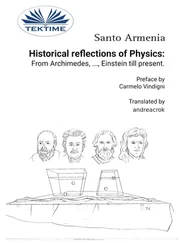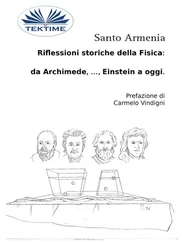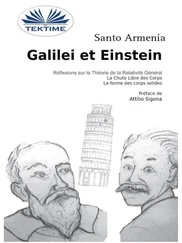The wind cut through his clothing as he walked from the semicular driveway to the building’s entrance. At least the uncomfortable beard kept his chin warm, he thought. Professor Hernando Garcia’s laboratory was on the ground floor of the large limestone building. The door bore yellow signs with magenta letters warning of laser hazards and radioactivity. Roger knocked at the door, and almost immediately it opened.
“Dr. Wilkins, how good to see you,” Garcia greeted him. “How was your trip?”
“Hello, Hernando,” said Roger. “The trip was fine until I reached this frozen wasteland you call Michigan. The drive here from Detroit was, shall we say, memorable.”
Garcia smiled. “Well,” he said, “I think you’ll find that the trip was worth it.”
Roger took off his coat, gloves, and knitted cap and hung them on the rack by the door. “Where’s this ramjet of yours?” he asked, looking around.
“It’s in the little closet over here that I’ve instrumented with a vibration-isolated doubletorsion balance,” said Garcia, leading Roger to the other side of the room. He pointed to the computer screen. “The sensors read out the deflections, convert them to a force vector, and display them here. There’s a feedback loop to keep the force maximized. Notice the force direction it’s measuring. It’s pointing at galactic latitude 48 degrees and galactic longitude 264 degrees. Does that sound familiar?”
“Hmm,” said Roger. “Isn’t that approximately the direction of the dipole asymmetry of the cosmic microwave background radiation?”
“Indeed it is,” said Garcia. “That’s the direction my axions are coming in from.”
Roger stared at the display and shook his head, “An unbalanced force that points in the microwave dipole direction. That violates several of my favorite symmetry principles, Hernando. I think you’d better start at the beginning.”
Garcia took a breath, then smiled. “Well, to be brief, with the help of funding from the Iris Foundation, I’ve succeeded in detecting axions and demonstrating that they are at least a major component of dark matter.”
Roger whistled. “Axions, is it? I must confess that I never took them very seriously as the explanation for the extra hidden mass of the universe. I’ve always leaned toward massive neutrinos as the dark matter candidate of choice.”
Garcia shrugged. “What can I say? I looked, and there they are. When I read the papers about the Reynald toroid last year, it gave me the idea for the detector. Do you remember that back in 1983 Paul Sikivie at the University of Florida suggested that if axions existed, they could be converted to photons by a big magnetic field?”
“Yes, I remember looking into that,” said Roger, “but I thought there was an experiment by groups at Rochester and Brookhaven, and they didn’t see anything.” “Sure,” said Garcia. “They were only using a field of about a Tesla, and they were looking in the wrong place.”
“I see,” said Roger. “With a Reynald toroid, you can get a field that’s a thousand times larger.”
“Yes,” said Garcia, “and the axion conversion probability scales with energy density, not field, so my detector is a million times more sensitive than theirs. Even at that, I tried their technique first, and it didn’t work.”
“Why not?” Roger asked.
“The Rochester-Brookhaven experiment attempted to convert axions to microwave photons and detect the photons by varying the tuning of a microwave cavity, hoping to hit the right photon wavelength. I tried the same thing, but it didn’t work. It’s now clear it failed because the conversion isn’t going into photons.”
“No photons?” said Roger.
“No,” said Garcia. “The axions are converted to something else that moves at the speed of light. I don’t know what that might be. Neutrinos? Gravitons? Supersymmetric particles?”
“Wait a moment,” said Roger. “If you’re not detecting photons, what are you detecting?”
Garcia smiled. “I decided to try tuning the axion wavelength instead. I mounted two Reynald toroids with opposite fields on an optical bench pointed along the direction of the dipole asymmetry and varied their separation. When I hit a center-to-center separation of about five centimeters, strange things began to happen in my instruments. After a lot of testing, I discovered that, among other things, on resonance there is a net force pushing on my apparatus.”
“How do you explain that?” Roger asked, pushing on his beard.
“As I told you on the telephone yesterday, it’s a ramjet. The axions, which are more or less at rest in the cosmic background reference frame, are moving through my apparatus at about 1/800 of the speed of light. If and when they’re converted to massless particles like photons, they move away at the speed of light. The speed increases by a factor of 800 and brings with it a change in momentum. So although we can’t directly detect either the axions or the particles they’re converted into, whatever those are, we can detect the momentum change of the conversion process. The momentum is absorbed by the Reynald toroids. We see a maximum force vector that points toward the incoming axions.” “1 see,” said Roger. “But how can you be sure the momentum kick is coming from axions?”
“Well,” said Garcia, “the old Sikivie paper can be used to predict the response of the detector under various conditions of field strength and orientation. Pseudo-scalar particles have certain unique symmetry properties. All of the predictions agree very well with our measurements.”
“How big is the force?”
“I can get up to a few hundred dynes of thrust from my small prototype, and there are ways of getting more. It’s not enough for levitation, but it should be sufficient to drive a small fuelless space probe anywhere you want.”
“But it only produces thrust in only in the direction of the dipole asymmetry,” said Roger. “That doesn’t sound too useful.”
“No,” said Garcia. “The maximum is in the direction of the incoming axions, but the thrust is perpendicular to the plane of the magnetic field lines. You can point that anywhere in a hemisphere, and as the velocity builds, the incoming direction becomes the direction you’re moving in. With a curved trajectory, you could launch a probe in any direction you wanted.”
“A few hundred dynes isn’t much thrust, though,” said Roger.
“But the faster it goes through the axion medium,” said Garcia, “the more axions per second enter the field and the more thrust you get. That’s why I call it an axion ramjet.”
“Wait a minute,” said Roger. “The thing accelerates forever? With more and more thrust? That’s not possible, Hernando. It would soak up all the mass in the universe.”
“Remember,” said Garcia, “ramjets are always limited by the difference between inlet and exhaust velocity. In this case, the exhaust velocity is lightspeed, but the input velocity depends on how fast the object is moving through the axion medium. As the device approaches lightspeed, you lose the momentum kick because velocity change between in and out goes to zero. The device has its limits. It doesn’t work well near the speed of light. But it’s going to be useful, I think.”
“Useful…” Roger repeated. “You’re being far too modest, Hernando. You’ve invented a space drive that produces thrust without using any fuel. We can send probes to the stars. And maybe go there ourselves.”
Garcia smiled.
As he walked back to his car through the swirling snow, Roger’s mind was racing. This effect of Garcia’s was definitely not mentioned in the Makers’ download. Could the Makers be concealing it, for some reason? Or had they never discovered it? Roger weighed the alternatives, thinking of Iris. It was simply not the Makers’ style to conceal information. They didn’t know about the effect. Perhaps in the Makers’ Universe in the vicinity of their solar system the axion density was too low to show Garcia’s effect. He had discovered a new phenomenon that the Makers did not know about. Roger smiled. Mankind had reached the frontier.
Читать дальше











